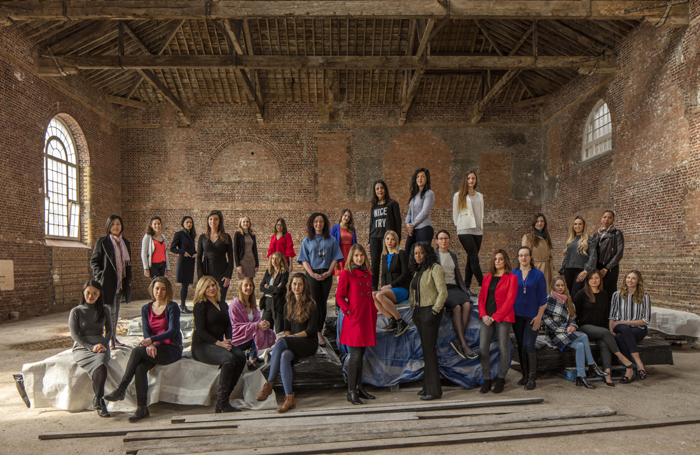Networking and support groups for women in construction have proliferated in recent years to reflect a wider range of interests and support needs, from getting women onto construction sites to getting them into the boardroom, from raising their profile in social housing to challenging male dominance in the world of BIM.
Katy Ghahremani, member of the RIBA’s Equality and Diversity Committee, ‘Architects for Change’, suggests the original women’s groups were probably more active ten years ago, when the emphasis was on making women’s voices heard in the industry for the first time: ‘With all these new groups appearing, that says to me that we are progressing.’
One organisation that has been there from the beginning and which appears to be more active than ever is the National Association of Women in Construction (NAWIC), which started out as the Women in Construction of Fort Worth, Texas, more than 60 years ago.
These days it has chapters around the world and eight active regions across the UK and Ireland, organised under the national umbrella of NAWIC UK & Ireland.

NAWIC’s stated aims are to achieve a shift of focus from gender to ability, to level the playing field in construction and to put an end to stereotypes. It organises networking events and seminars, has a good online resource and has active work streams in education and advice, particularly early stage career advice and mentoring.
Architect Kathy Basheva, head of development for NAWIC’s London and South-East group, says NAWIC is there to support all women in the industry at every stage in construction, from acquiring property to building trades on site. Current membership, however, clearly leans towards the professional end of construction and development, with architects being well represented.
NAWIC is not-for-profit and is run entirely by volunteers, with one quarter of its membership income going into a student and hardship fund. It has links with many organisations and universities/colleges/schools and is regularly called upon to provide mentors.
It is now a partner in the FLUID Diversity Mentoring Programme set up and developed by Architects for Change and the Construction Industry Council, through which it can offer its members access to a formalised mentoring programme.
Many construction sub-sectors now have their own dedicated women’s groups, such as Women in Property, Women in FM, Women in Social Housing, or Women in Building Services Engineering.
Two years ago, graduates at housebuilder Barratt set up Built by Both, an industry-wide initiative to promote and encourage young women into roles within the house building industry.
The most high-profile organisation connecting women with contractors is Women into Construction (WIC). Originally set up as an Olympics legacy project, WIC still maintains a focus on large public projects, but is now spreading beyond the capital and is in the process of going national, beginning with Birmingham and Wales. It describes its mission as facilitating connections between women, contractors, training organisations and referrers to create a more diverse workforce.
Then there is Women in BIM, set up five years ago as a networking group to support and draw attention to the low number of women in BIM-related roles and tech generally. It is putting together a Women in BIM Database that it plans to use to create networking hubs to discuss and share ideas in the context of BIM both in the UK and globally.
This leaves the question of what is going on in the profession’s own Women In Architecture (WiA) group, which grew out of the RIBA’s Architects for Change and shared in the huge success of the DiverseCity exhibition that toured the world?
Recently-installed WiA chair Anna Schabel admits that while the group remains intact, there has not been a lot happening of late. This could all be about to change next month (May 2018), when WiA members will gather to discuss a re-launch and a re-building programme for the group, and will thrash out its forthcoming agenda and action plan.
Schabel says collaborations with the RIBA, tackling harassment in the workplace, and women role models are expected to be some of the issues up for discussion. Women architects interested in supporting a re-launched WiA are invited to email Schabel directly.
Thanks to Katy Ghahremani, Director, Make Architects; Kathy Basheva, Director, Studio Basheva; Anna Schabel, Director, Wilton Studio.
Text by Neal Morris. This is a Professional Feature edited by the RIBA Practice team. Send us your feedback and ideas
RIBA Core Curriculum Topic: Architecture for Social Purpose.
As part of the flexible RIBA CPD programme, Professional Features count as microlearning. See further information on the updated RIBA CPD Core Curriculum and on fulfilling your CPD requirements as an RIBA Chartered Member.
Posted on 19 April 2018









